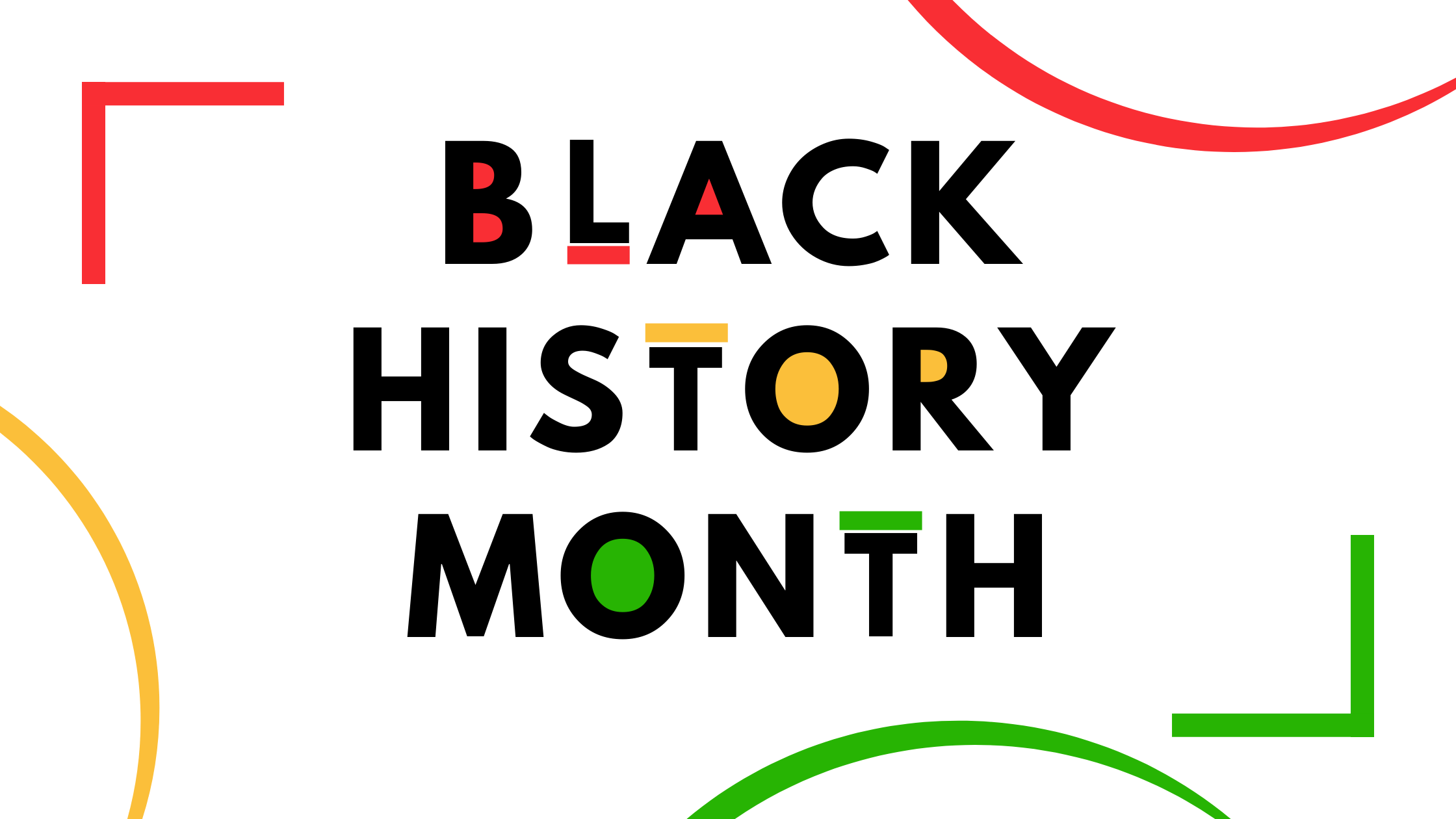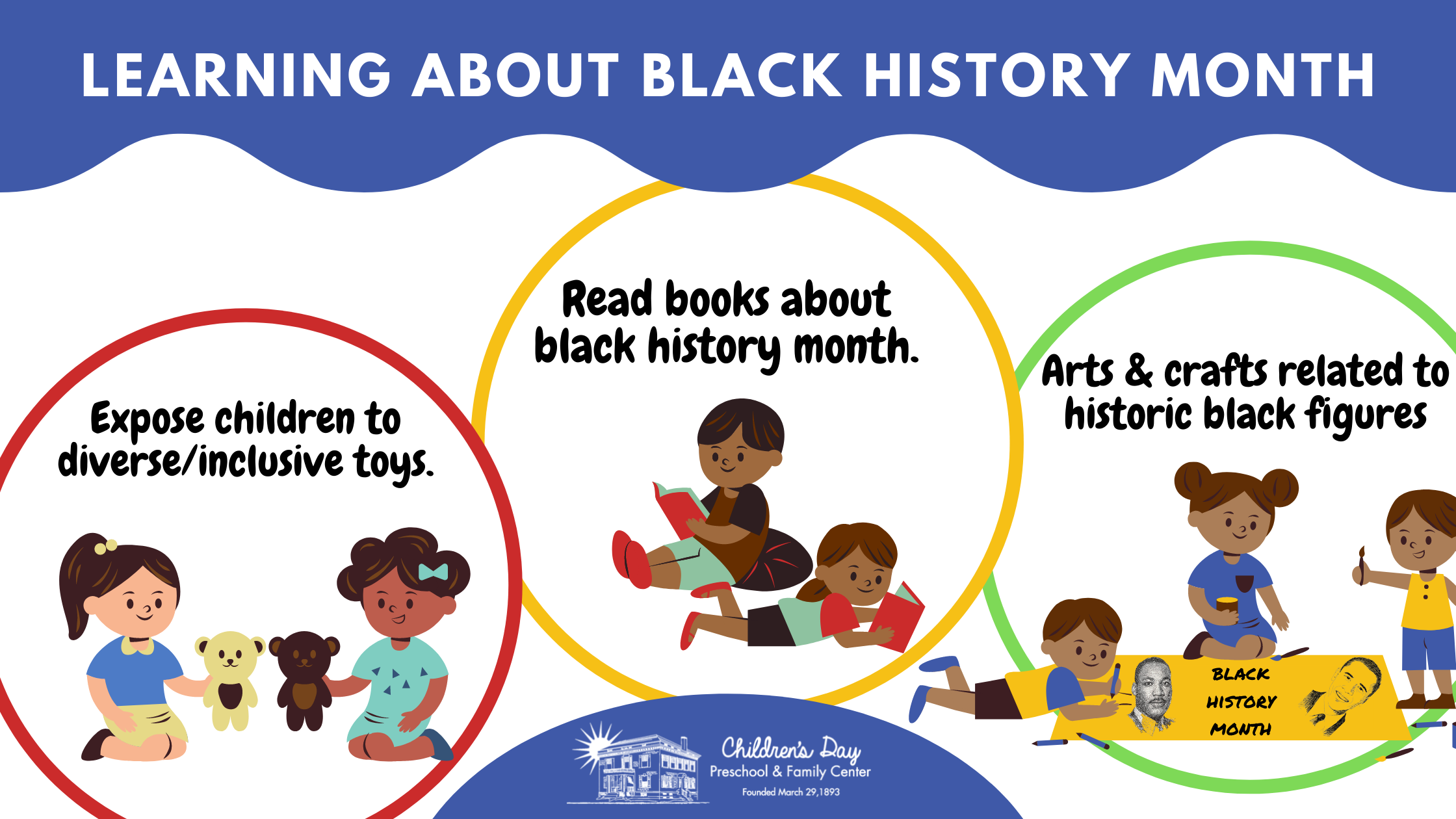Celebrating Black History Month with Young Children
why celebrate black history month
February is celebrated as Black History Month nationwide to recognize the achievements of African Americans and understand how their actions shaped history. As the end of this month looms closer, we would love to offer you some tips for making this important topic interesting and exciting for you and your child.
Black history is a vital component of U.S. history, and these lessons will lead to a discussion of significant topics that continue to have an impact on society today. By emphasizing the importance of this month to your child, they will learn about history, society, and their social environment. Black History Month should not only be a time to celebrate achievements by African Americans but also to acknowledge successes long overlooked and unrecognized.
What is BLACK HISTORY MONTH
Black History Month began as a week-long celebration in 1962 created by historian Carter G. Woodson. By the late 1960s, the civil rights movement along with a growing dedication to celebrating black identity, motivated many to make this into a month-long observation. In 1976, President Gerald Ford officially recognized Black History Month, and every subsequent U.S. president has continued to follow this tradition.
Teaching Black history
Black History Month should not only be a time to celebrate achievements by African Americans, but also to acknowledge and celebrate those whose successes have been overlooked and received too little recognition. It is also important to teach your child that although it is a month-long celebration, African American achievements should be celebrated and acknowledged every day. By emphasizing the importance of this month to your child, they will learn about history, society, and their social environment.
Here’s what our Education Supervisor, Mariluz Lopez, had to say about how Children’s Day celebrates Black History Month. “At the preschool level, children don't really understand time as we do, so it is really not presented to them as Black History Month. However, teachers do incorporate games that involve inventions by African Americans, such as the Green Light, Red Light game, emphasizing that the modern traffic light was perfected by the African American Inventor Garret Morgan. Our teachers also share many books and stories with the children including the lives of historic African American figures and stories about children of African American culture. Discussions and activities that celebrate our uniqueness- including different shades of skin tone- are also a common topic.”
Here at Children’s Day Preschool, we ensure that every student feels included by surrounding them with diverse and inclusive toys, books, and items from many backgrounds. Some examples include household items from their own cultures, dolls and clothing from a variety of other cultures, and pictures of people of different races, ages, abilities, genders, and occupations.
Read Together
Our classroom bookshelves contain many books that display diversity and inclusivity as well as those relating to Black History all year long.
Many of these books are available at your local library- or can be purchased from your favorite bookseller!
We encourage parents and families to get involved with this important celebration of Black History Month! Reading aloud about historic African American figures creates an appreciation and understanding of their contributions and the impact they had on the world. Discovering the accomplishments of today’s black figures like politicians, artists, and scientists, among others, creates an appreciation of how they are making a difference today. Check out your local library or bookstore… we are sure you’ll find a wide variety of books that celebrate Black History Month. Bring some home and share them with your child today.




